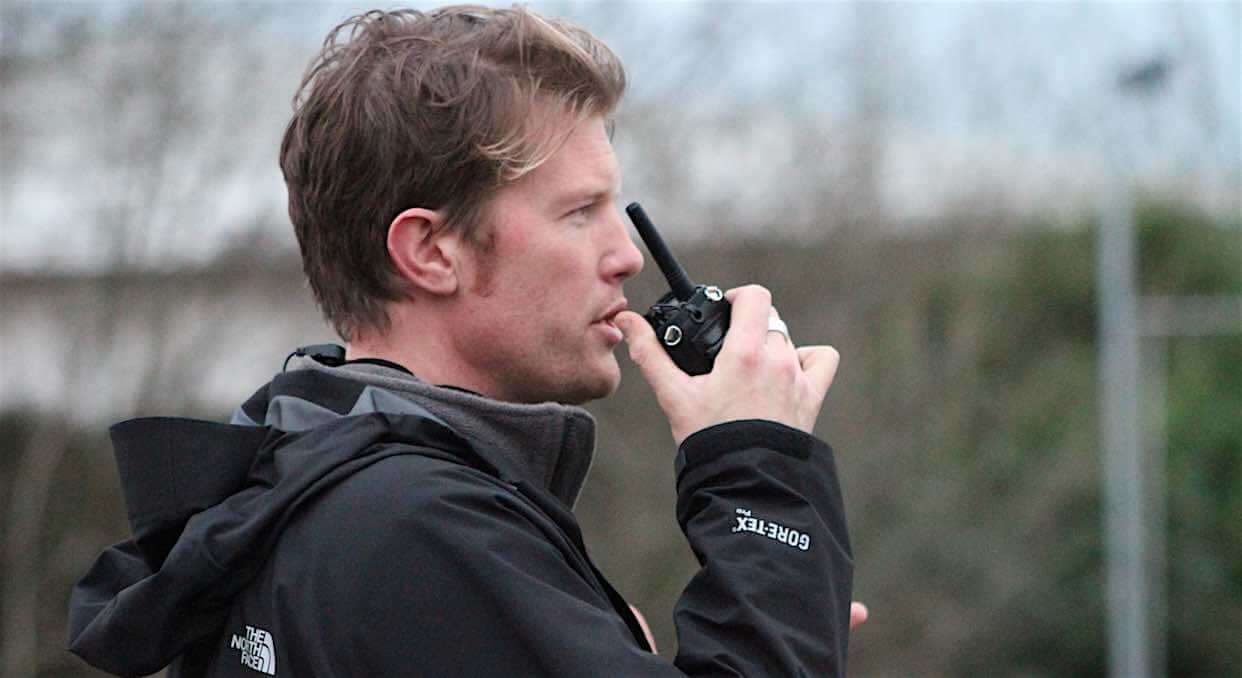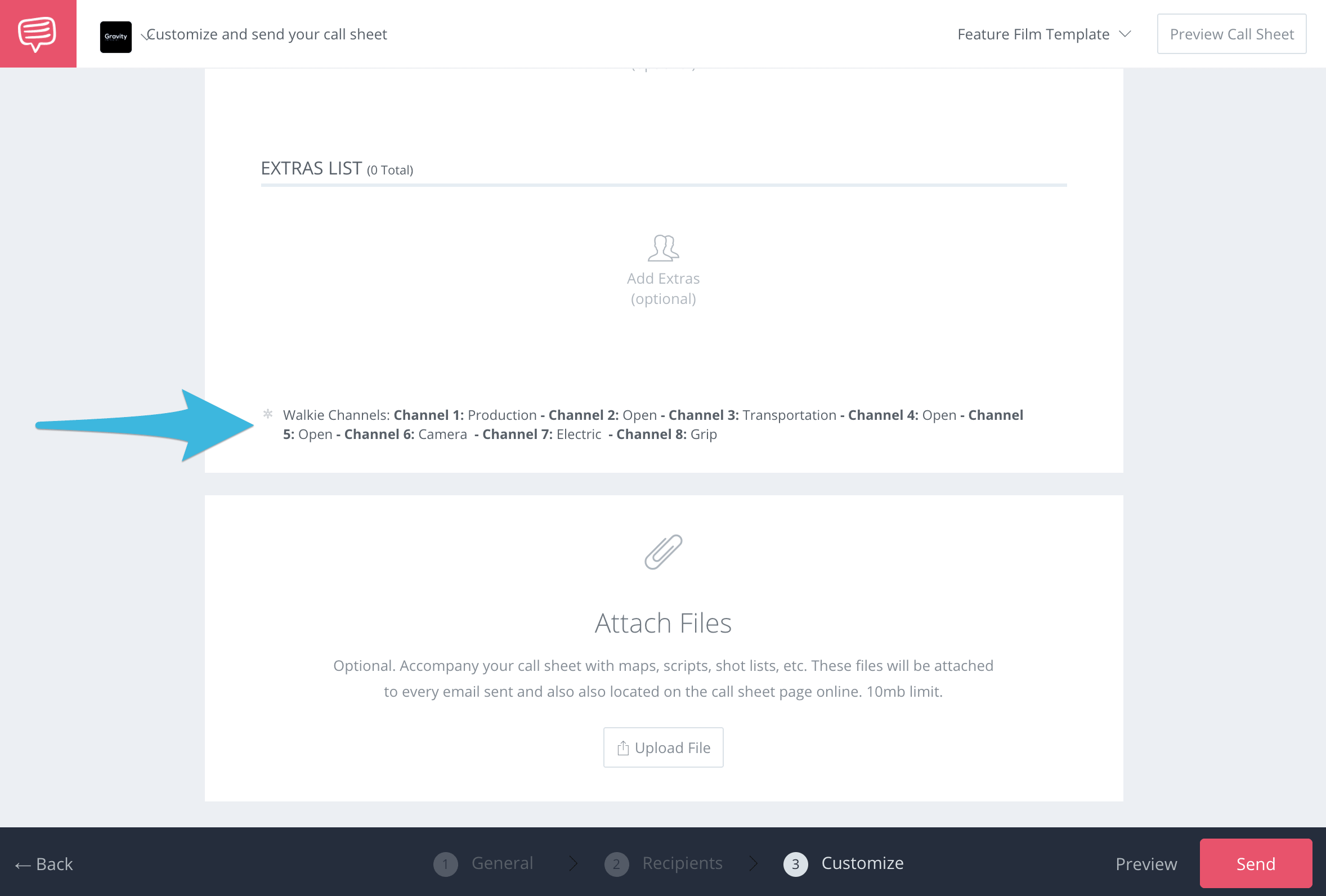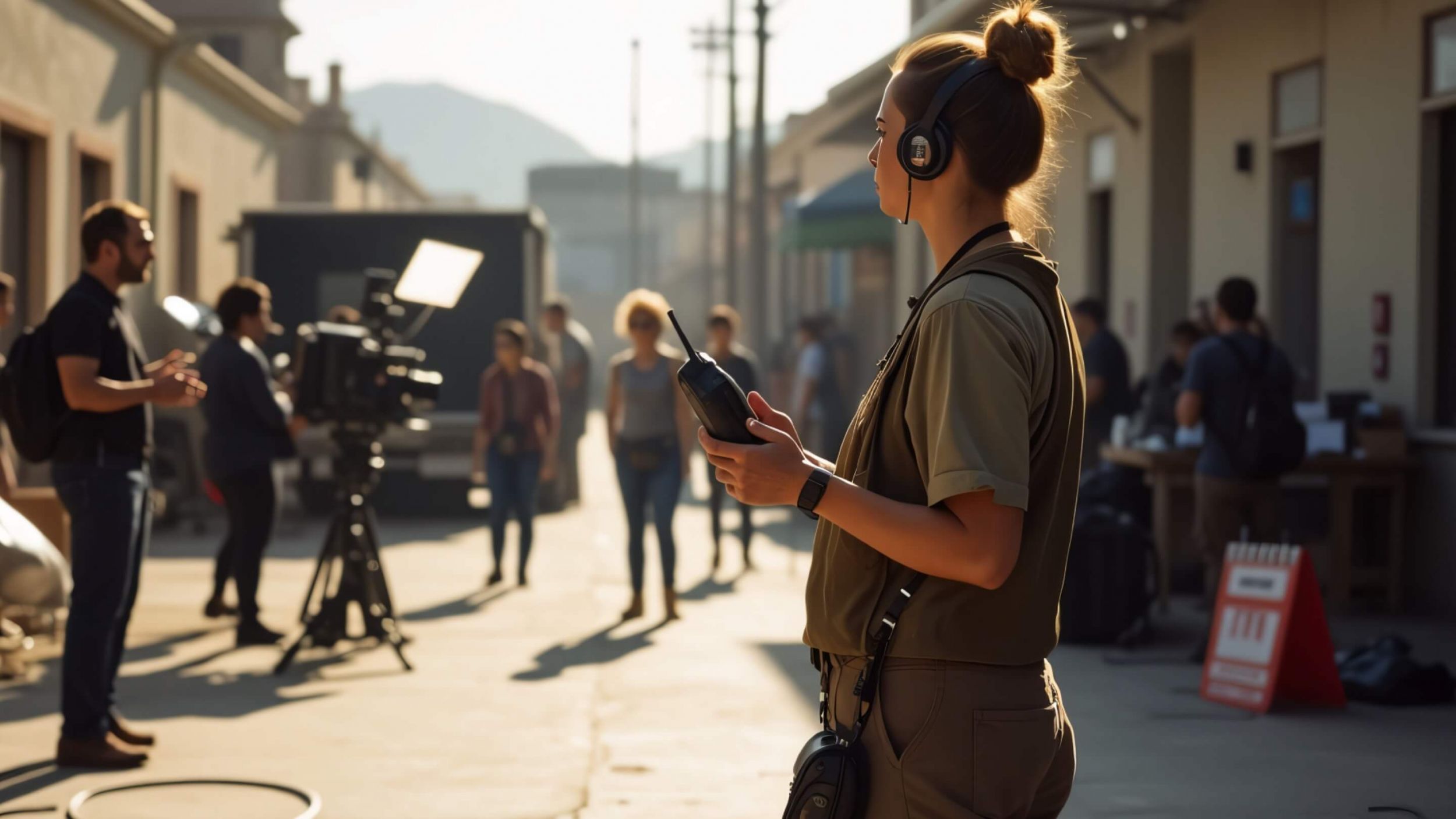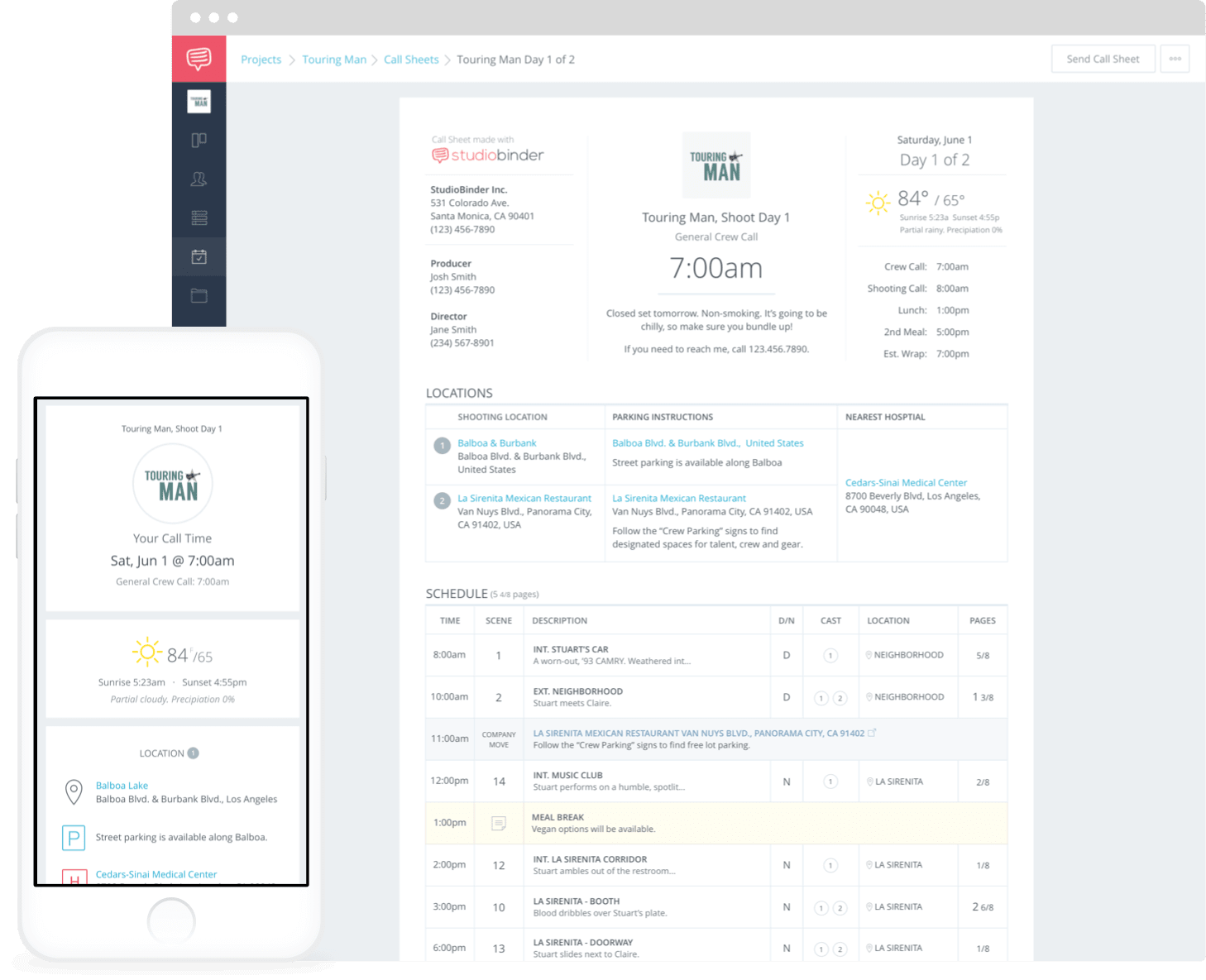W
hat’s your 20? What does 10-4 mean? Bogey. A walkie-talkie is a powerful tool on a film set. But it’s nothing unless you know the walkie-talkie lingo.
Luckily, mastering film set walkie talkie lingo isn’t as hard as finding your film crew. We’ve compiled the most-used walkie talkie codes and radio etiquette tips to have you saying “10-4 over and out” in no time.
How to Use Walkie Talkie Lingo
walkie talkie lingo
1. What is common walkie talkie lingo?
- 10-1 – “I need to go the bathroom” (number 1)
- 10-2 – “I need to go the bathroom” (number 2)
- 10-4 – “I understood the message”
- 20 – Location; as in, “What’s your 20?”
- Copy – “I heard and understood the message”
- Go Again – “I did not understand the message, please repeat”. You can also say “come back on that”.
- Eyes on… – When someone or something is spotted; as in, “I’ve got eyes on Spielberg” or “Does anyone have eyes on my lunch box?”
- First Team - The principal actors in in a scene, as in: “walking first team to set"
- Second Team - the stand-ins for the principal actors
- Lock it Up – “Don’t let anyone through”. This is usually an instruction to a PA who was told of a door or area they must block.
- Flying in – When someone or something is en route; as in, “I’m flying in masking tape.”
- On it – When you understand the request and are actively working on it. Use only if you have started the work.
- Ethan for Nicky – ‘Ethan’ being your name, ‘Nicky’ being the person you want to reach.
- Go for Nicky – The response. “I heard you call for me, what’s up?”
- Walkie Check – When you first turn on your walkie talkie. Someone will reply with “Good Check” so you know your walkie talkies working.
- Keying – When someone is accidentally holding down the “talk” button on their walkie. Someone will catch it and say “keying” or “someone’s keying.”
- Going off walkie – When you’re taking off your walkie talkie or can’t talk anymore.
- Spin that, please – When something is said on channel 1 that needs to be passed along to other channels. This is usually assigned to a key set PA or 2nd 2nd AD before the shoot.
- Standby – “I hear you, but I’m too busy to reply.”
- Standing by – “I’ve completed the task and am awaiting further instruction.”
- Strike (or 86) – When something needs to be removed; as in “Strike that prop” or “86 those C-stands from staging”.
- Kill – When something needs to be turned off; as in “Kill the fog machine.”
Before you can give yourself a walkie talkie code name, you gotta speak the radio lingo. Think of this list as a walkie talkie dictionary:
WHAT DOES 10-1 MEAN ON A FILM SET?
On a film set, 10-1 is the walkie talkie code for the bathroom. While literally meaning you need to pee, using as this as a catch-all saves your film crew from t.m.i.
If you find you need more time (maybe the craft services is all beans), just ask to “Upgrade your 10-1.”
advanced walkie talkie lingo
2. Examples of advanced lingo
Film set slang is as infinite as it is weird. Now that we’re past ‘What’s your twenty,’ here’s some film crew terminology you could hear on a channel:

An example of a 2nd AD using a walkie talkie
- Martini shot – The last shot of the day. The next shot is "Tequila."
- Choker – A tight close-up of eyes only, as in: “Flying in Mr. Depp for the choker.”
- Baby legs – The legs of a camera tripod.
- Bogey – Sometimes “Bogie.” It’s someone not supposed to be on set.
- Four-banger – A large trailer with four doors, a production room, a dressing room, and a crew bathroom.
- Hot Brick - A battery with a full charge.
There’s obviously more walkie talkie lingo beyond that, but it gets kind of random.
walkie talkie codes
3. Radio etiquette on set?
This matters more than you think it does.
- Give up your walkie talkie if someone higher than you runs out of battery.
- Speak slowly, clearly, and at a moderate volume.
- Cut back on jokes and other non-sequiturs.
- Learn your crew’s voices to avoid constantly asking who you're speaking with.
- Be brief and to the point. Bluntness is best.
- Think before you speak. Concise your point into walkie talkie codes. Are you saying something offensive? Just think.
- Wait a beat before you begin to speak. Don’t hit the button right when you speak. You’ll have to repeat yourself.
- Be aware of your walkie talkie’s buttons. Don’t accidentally switch your dials on, or turn down the volume and miss important instructions.
- Ask twice when needed. While it’s always best to say “10-4 over and out,” if you don’t understand, don’t be afraid to ask again. Repeating instructions back can help this.
- Check your channel often to make sure you didn't forget to switch back.
- Think about buying your own surveillance earpiece. These are cheap and may be in short supply when you get to the set.
- Keep your mic a good distance from your mouth while speaking. You don't want your voice to be too loud. 3-5 inches away should be good enough.
- Make sure your mic wires are underneath the back of your shirt. Loose wires are a danger to yourself and others.
Learning radio etiquette is a matter of experience. But more often than not, treating a walkie talkie as a powerful instrument of communication rather than a toy resolves most issues.
PRO TIP: INVENT YOUR OWN WALKIE TALKIE LINGO
Are you working with an ultra famous actor? Or how about a difficult to manage shark robot?
Then create some walkie talkie code names. By tailoring your radio lingo to your specific project, you can save time and inject some fun throughout the production.
In StudioBinder, you can easily add walkie talkie channels when you create your call sheet.

StudioBinder's Call Sheet Builder has footer space for channels.
That way when your crew gets their call sheet text the night before, they’ll be in the loop.
Related Posts
walkie talkie channel
4. Walkie talkie channels on film sets
Now you that you the most common walkie talkie codes, it’s time to turn to the channels. Not every production is the same.

Here are some common walkie talkie channels you'll find on productions.
While it can vary from set to set, the most common walkie talkie channels are:
- Channel 1 - Production
- Channel 2 - Open, for one-on-one conversation
- Channel 3 - Transportation
- Channel 4 - Open, for one-on-one conversation
- Channel 5 - Open, for one-on-one conversation
- Channel 6 - Camera
- Channel 7 - Electric
- Channel 8 - Grip
PRO TIP: CHECK THE CALL SHEET FOR WALKIE TALKIE CHANNELS
Every film set is different. No two walkie talkie codes are alike. Before you walk on set, ready to sling radio lingo left and right, review the call sheet. The walkie talkie channels being used may have changed.
walkie talkie etiquette switching channel
5. Switching channels etiquette
The number of channels and departments vary from production to production.
Channel 1, however, will be the main channel. Used primarily by the production coordinator and PAs, this is where people call for each other and make general requests and notifications.
For one-on-one communication, switch to Channel 2. If you have a question or can’t reply with one of the terms above, Channel 2 is for you.
To switch walkie talkie channels, call for someone to “Switch to 2.” The receiver will respond: “Copy, switching to 2” and then "On 2" after they switch. Then, chat normally.
When you’re finished, call: “Back to 1.” The receiver should respond “Copy, switching back to 1.” And voila.
On a hectic set, keeping walkie talkie channels open is key.
A WALKIE TALKIE CONVERSATION EXAMPLE
Knowing enough walkie talkie lingo, you can easily decipher this:
1st AD: Does anyone have eyes on The Falcon?
PA: Flying The Falcon in now.
1st AD: What’s your 20?
PA: Melrose and Santa Monica.
1st AD: 10-4. Can you bring him to make-up?
PA: Copy that, going off walkie.
The PA mounts a series of hard turns.
PA: Walkie-check.
1st AD: Good check.
PA: Falcon at make-up. Standing by.
1st AD: 10-4 over and out.
Walkie Talkie Lingo PDF

Download your FREE Walkie Talkie Lingo Cheatsheet
Just enter your email address and we'll instantly send it to you!
Up Next
Being a Production Coordinator
Having a trusty walkie talkie can make difficult shoots run more smoothly. And most importantly, it can make you feel like a secret agent.As every production coordinator knows, proper radio etiquette is the key to an organized shoot. Learn more on how to organize your shoot as the production coordinator.

